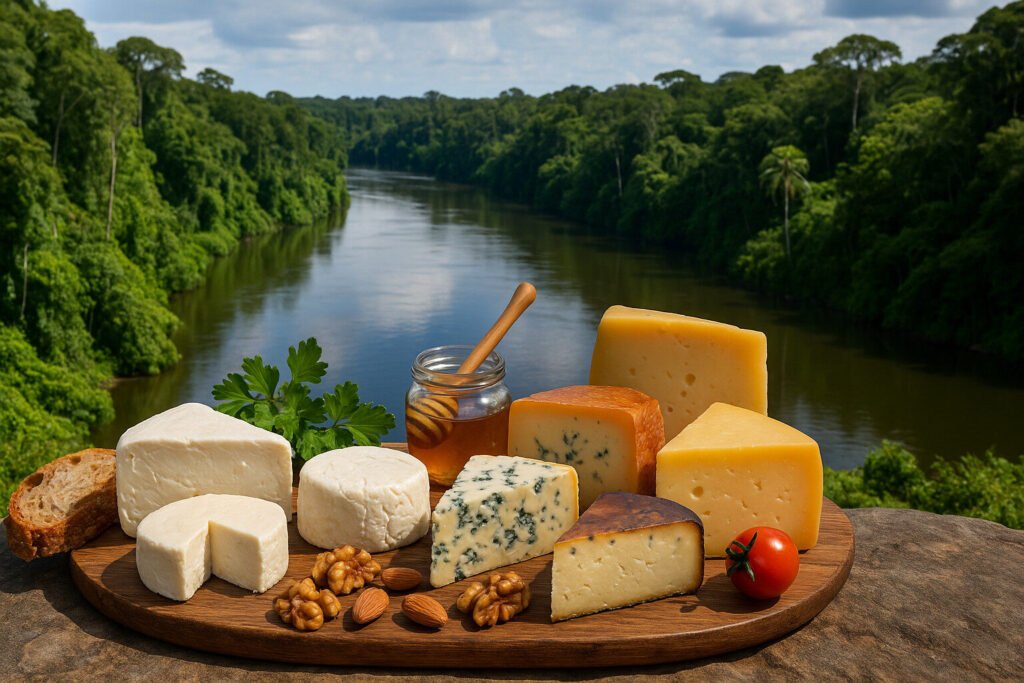Cheese Of Amazon Basin
Definition and Scope
Cheese of the Amazon Basin refers to artisanal dairy products crafted in the rainforest regions of South America. These cheeses utilize milk from water buffalo, cattle, or goats raised in the unique tropical environment. They represent a distinct category within cheese taxonomy due to their specific geographical and climatic influences.
The scope encompasses traditional varieties developed by indigenous and local communities over generations. These products often incorporate regional techniques adapted to high humidity and temperature conditions. Their production remains largely small-scale, preserving cultural heritage while meeting local nutritional needs.
Production Methods
Amazonian cheese production typically involves raw milk processing without extensive technological intervention. Traditional methods include natural fermentation using local bacterial cultures found in the environment. The curdling process often utilizes tropical plant extracts instead of conventional rennet.
Cheese aging occurs in natural cave systems or elevated wooden structures that provide necessary ventilation. The high humidity necessitates shorter aging periods compared to European counterparts. Many producers use banana leaves or other local materials for wrapping, which imparts distinctive flavors.
Sensory Profile
Amazon Basin cheeses generally present pronounced earthy and herbaceous notes derived from the animals’ diverse forage. The texture ranges from semi-soft to firm, with some varieties developing natural rinds from the humid aging environment. Their flavor profiles often include tangy, lactic characteristics with subtle fungal undertones.
Color variations reflect the local diet of dairy animals, sometimes yielding deeper yellow hues. The high moisture content contributes to a supple, sometimes sticky texture. These cheeses typically exhibit moderate salt levels and complex aroma profiles influenced by tropical microflora.
Culinary Applications
Traditional Amazonian cheeses serve as protein staples in local diets, often consumed fresh with cassava or plantains. They feature prominently in regional dishes like tacacá and vatapá, where their melting properties enhance stews and sauces. Many varieties are grilled directly over open flames as street food.
Contemporary applications include grating over tropical fruit salads or incorporating into stuffed breads. Their robust flavors pair well with acidic fruits like cupuaçu and açaí. Some cheesemakers now experiment with smoked versions using local hardwoods for added complexity.
Regional Examples
Queijo do Marajó represents a prominent Amazonian cheese from the river island of Marajó in Brazil. This water buffalo milk cheese features a distinctive tangy flavor and semi-soft texture. Its production follows methods introduced by Portuguese settlers centuries ago.
Other notable examples include Queijo de Coalho from northern Brazil and various fresh cheeses from Peruvian Amazon communities. Colombian Amazon regions produce Quesillo de Hoja wrapped in bijao leaves. These regional variations demonstrate adaptation to specific microclimates and cultural preferences across the basin.

